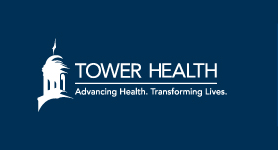Whispers of Resilience: Navigating Primary Ovarian Insufficiency in the Shadows of Metabolic Disorder
Document Type
Abstract
Publication Date
9-1-2025
Abstract
Description: Classic galactosemia (CG) is linked to primary ovarian insufficiency (POI), even with early dietary management. Many affected females develop secondary amenorrhea and subfertility despite normal pubertal development. Early recognition and monitoring of ovarian function are essential. Current fertility options are limited, and emerging therapies lack strong evidence. More longitudinal studies are needed to guide management and improve outcomes. Case Report: A 26-year-old female with CG on a galactose-restricted diet since infancy presented with 6 months of oligo-amenorrhea. She achieved menarche at 15 with previously regular periods. Lab results showed elevated follicular stimulating hormone (FSH) (79.1 mIU/mL, normal: 3.9-8.8), luteinizing hormone (32.7 mIU/mL, normal: 2.1-10.9), and low estradiol (< 15 pg/mL, normal: 25-115), progesterone (0.35 ng/mL, normal: 0.31-1.52), and anti-mullerian hormone (0 ng/mL, normal: 0.69-13.39), indicating poor ovarian reserve. Pelvic ultrasound revealed small ovaries, and elevated galactose metabolites confirmed CG-related complications. Hormone replacement therapy was initiated to address deficiencies. Despite stable FSH/luteinizing hormone levels, fertility assessment for oocyte cryopreservation suggested a limited response due to persistently low anti-mullerian hormone and poor estrogen response to exogenous FSH. Discussion: Secondary amenorrhea and subfertility in patients with CG and otherwise normal growth and puberty warrant suspicion of POI. Prompt recognition and diagnostic evaluation can alleviate the psychological burden associated with this diagnosis. Dietary galactose restriction, calcium supplementation, and comprehensive monitoring of biochemical, neurodevelopmental, and endocrinological parameters are paramount. Early management of POI, inclusive of a nutritious diet and vigilant ovarian function monitoring, are crucial. However, even with strict dietary galactose restriction, ovarian complications may still occur. Conclusion: CG can present with diverse clinical manifestations, but its diagnosis should alert clinicians to the early prediction and detection of secondary amenorrhea due to POI to address subfertility risks in young females. The lack of randomized controlled trials highlights the need for longitudinal studies and registry integration to clarify the impact of hormone replacement therapy on clinical outcomes and inform evidence-based guidelines. Emerging reproductive interventions, such as mesenchymal stem cell transplantation and in vitro activation of dormant follicles, show promise but are supported mainly by case reports and small series. Rigorous randomized trials are essential to validate these techniques for fertility restoration in CG-related POI.
Publication Title
Endocrine Practice
Volume
31
Issue
9 Supplement
First Page
S142
Last Page
S142
Recommended Citation
Baral, B., Parajuli, S., & Shrestha, B. (2025). Whispers of Resilience: Navigating Primary Ovarian Insufficiency in the Shadows of Metabolic Disorder. Endocrine Practice, 31 (9 Supplement), S142-S142. https://doi.org/https://doi.org/10.1016/j.eprac.2025.05.390


Comments
AACE Annual Meeting 2025 held 2025-05-15 to 2025-05-17 in Orlando, FL, USA.